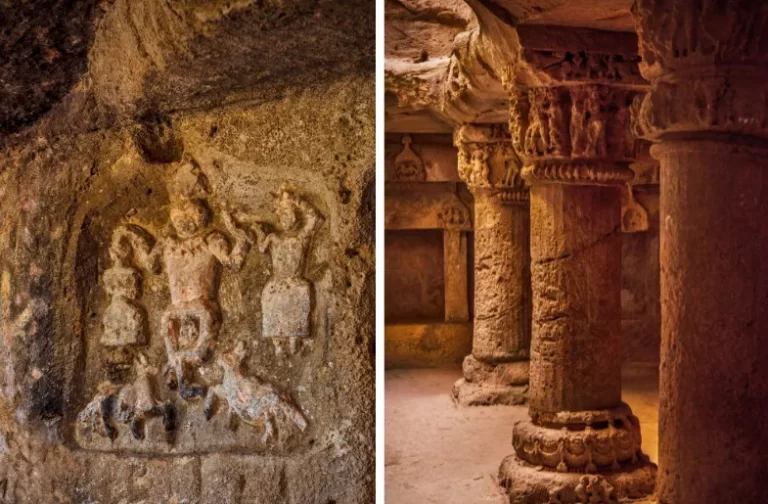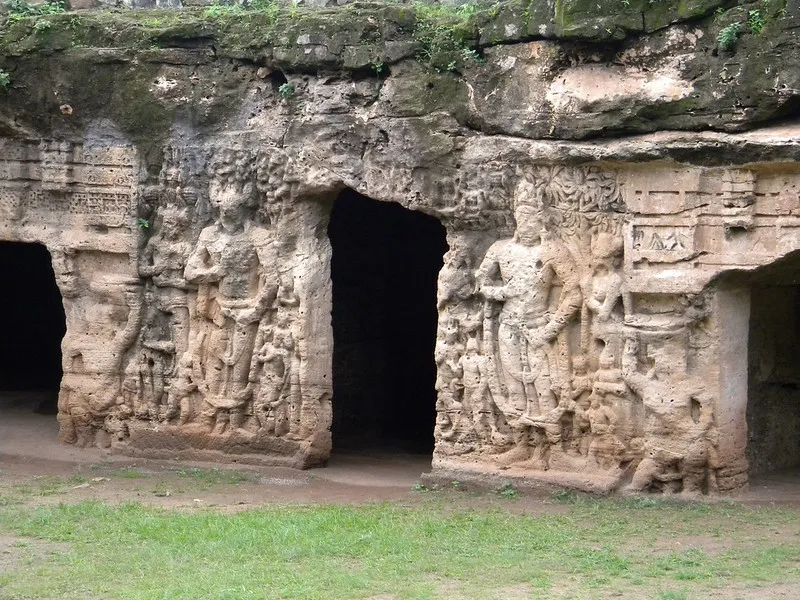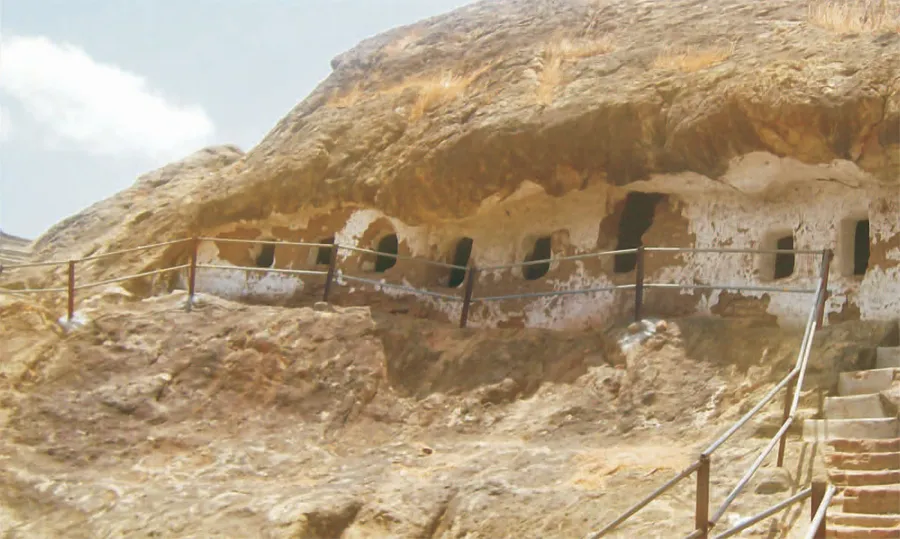
Caves seem to be so well-planned that once entering them, you realize that every structure was laid with thought. Every stone, every wall, even the foundation was built according to the need of the monks, who used to meditate in solace.
By Suman Bajpai
Caves have always fascinated me. With their texture and architecture, they are a marvel of centuries-old craftsmanship. Calm and serene, the ruins inhabit a deep silence that soothes my mind. I can feel the peace — a kind of spiritual vibration permeates the atmosphere.
Caves seem to be so well-planned that once entering them, you realize that every structure was laid with thought. Every stone, every wall, even the foundation was built according to the need of the monks, who used to meditate in solace.
The remains of Buddhist establishments have been found in almost every region of Gujarat in the form of rock-cut caves.
When the situation was favorable, I got the chance to visit such caves in Gujarat, India. Actually, these caves come under the Buddhist circuit of this state. The remains of Buddhist establishments have been found in almost every region of Gujarat in the form of rock-cut caves. The coastal region of Gujarat, stretching from Kachchh to Saurashtra and up to Bharuch, is dotted with several such caves. These caves were excavated between the 2nd century B.C. and 6th century A.D.
Buddhism had led the way for Indian art by encouraging the veneration of the symbols. The famous Chinese traveler, Hiuen Tsiang, had visited the stupendous Buddist caves of Baba Pyare, Khapra Kodia, and Uperkot of Junagadh during his travel in India in the early seventh century A.D.
Khapra Kodiya Caves
My very first visit was to the Khapra Kodiya caves at Junagadh, Gujarat. The oldest, the Khapara Kodia caves are the plainest of all cave groups and belong to the 3rd-4th century AD. These caves are situated along the edge of the ancient Sudarshan Lake (which no longer exists) and the northern side of Uparkot. Cut into a ridge of trap rock in an east-west direction, all the chambers of this group of caves are rather plain.
The central part is somewhat narrow, which provides an approach to the caves, facing a kind of broad U-shaped quadrangle formed by rock excavation on the southern side. The two prominent wings of the caves comprise of an oblique oblong western wing provided with a great pattern of water tanks within having rock-cut steps for harnessing and storage of rainwater, and a wing-shaped ‘L’ shaped wing fashioned to serve as a dwelling campus for Buddhist monks. There are many scribbling and short cursive letters on the walls of some of the chambers and their corridors. These caves were carved into living rock during the reign of Emperor Ashoka and are considered the earliest monastic settlement in the area. The Khapra Kodiya caves are the most unadorned of the Junagarh caves.
Uparkot Caves
This important rock-cut group of caves is located at the Uparkot ridge across an eastward slope. These caves are scooped out in three tiers from the surface downwards, with all members of each gallery shown in semi-relief. There are three rock-hewn chambers’, each open to the skies. A winding flight of steps from the south leads into the first chamber, which is a pond with a covered corridor around it. The pond got water directly from the rains as well as from an elaborate system of vertically cut drains and cisterns on the top surface.
The three-tiered Uparkot caves are justly famous for their exquisite art. Its lower floor has a corridor and six ornate pillars. The large hall is decorated with Chaitya motif with female figures in them. At the entrance is a raised square platform with a pair of short thin pillars supporting a framework that projects down from the roof. Base shaft and capital of pillars are decorated with a unique design with traces of Satvahana art and exotic Greaco-Scythian trends. The body of the capital is divided into eight denoting breaks in the ledge at the base, each section carries a group of women, and some of them have multiple Cobra hoods and are lightly clad and attended by dwarf attendants. The larger columns are decorated with exuberant chain and festoon designs in the main body of its flattened pot-form. The pillars are stylistically dateable to the 2nd century A.D.

Khambhalida Caves
Located in Gondal taluka of the Rajkot district, Khambhalida caves have five groups of caves in limestone rock. The first group consists of seven caves of varying dimensions and were probably Viharas for monks to stay. A second of three caves is the most important, having a Chaitya hall in the center, Padmapani Avlokiteshwara and Vajrapani grace the entrance of Chaitya hall. Undoubtedly, these caves are indicative of belonging to a Mahayana order. The Chaitya has an apsidal end with the free-standing rock-cut worn-out Stupa. The Vihara caves have plain interiors. On the basis of structural style, the caves believed to be of the third century A.D.
Kadia Dungar Caves

Located between Jaghadia and Netrang of the Bharuch district, Kadia Dungar caves are also called Vaghandevi caves as a monolithic lion pillar stands at the base of the Kadia hills. These seven rock-cut caves suggest that they were viharas. A Brick stupa was also found in the foothills. The caves are the first of their kind to be found in the region of south Gujarat and are said to be of the Kshatrap period (1-3 century AD). People of that area believe that these caves were made by the Pandavas during their period of exile, and the legend of Bhima’s marriage with Hidimba is also associated there.
Amidst their tiresome journey, wandering Buddhist monks were granted these caves as shelter. While building these caves, the ancient architectural skills utilized are also notable. Since, its discovery in the modern era, these caverns have been a holy shrine for Buddhists.
_________________
Suman Bajpai is a freelance writer, journalist, editor, translator, traveler, and storyteller based in Delhi. She has written more than 12 books on different subjects and translated around 150 books from English to Hindi.
Courtesy: India Currents (Published on July 5, 2021)